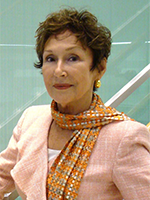The U.S. Department of Labor’s recent $203 million investment in the Senior Community Service Employment Program (SCSEP) signals a shift in how we value older adults in today’s economy. This initiative, which provides training and career services for low-income adults ages 55 and older, is becoming more important considering our rapidly changing demographics. As we move toward a more inclusive and age-diverse economy, expanding programs like SCSEP will be essential to overcome barriers to employment.
A Workforce Defined by Experience
America’s workforce is rapidly aging. As of 2022, 1 in 3 workers was at least 50 years old. In 1998, just 12.4% of the civilian labor force was ages 55 and older; by 2022, that number had risen to 23.3%. By 2028, people ages 65 and older are projected to account for 9.4% of the workforce. These changes require rethinking how we view older workers and the value they bring to the economy.
This demographic shift also reflects a change in how people approach their careers. Many older adults choose—or need—to remain in the workforce. Roughly 19% of adults ages 65 and older were employed in 2023, nearly double the rate from 35 years ago. Economic factors such as inflation and rising healthcare costs push older adults to stay in the workforce.
The Economic Necessity of Older Workers
The growing number of older adults in the workforce is not just a demographic trend—it’s an economic necessity. As employers struggle to find the talent they need, particularly amid labor shortages in industries like healthcare and education, tapping into the skills and experience of older workers is becoming key to sustained economic growth.
SCSEP plays an important role in this. By providing low-income adults ages 55 and older with training in new technologies, upskilling opportunities, and community-service–based job experiences, the program helps participants remain competitive in today’s evolving job market and achieve financial stability. This initiative is vital for the well-being of older workers, particularly as wages from SCSEP assignments provide a critical safety net.
For many, employment in later years is a necessity. As of 2022, 6 to 8 million adults ages 65 and older were living in poverty. Additionally, certain groups—such as women, people of color, and individuals in poor health—experience poverty at more than twice the rate of their white counterparts, underscoring the importance of targeted workforce support programs like SCSEP.
Experience as a Competitive Advantage
Amid technological change and market disruption, experience is now an invaluable asset. Older adults offer depth of knowledge, problem-solving skills, and emotional intelligence, which can act as a stabilizing force for organizations. Age-diverse teams perform better, and older workers are often key contributors to intergenerational collaborations, providing mentorship and preserving institutional memory—critical elements for long-term success.
When we invest in older workers, we are investing in a more resilient economy.
Despite these advantages, stereotypes about older workers persist. Many are mistakenly seen as less adaptable or resistant to change. Programs like SCSEP help overcome these long-standing beliefs by equipping older workers with the tech training and expanded skill sets necessary to succeed in today’s competitive economy.
Supporting a Future Workforce: The Role of the On Aging Institute
As part of our efforts to enhance the role of older adults in the workforce, the American Society on Aging's On Aging Institute provides support through education and leadership training. Our vision is to equip individuals of all ages and career stages with the knowledge and tools to lead with equity, innovate across sectors, and build sustainable, impactful programs. One of ASA's member organizations, and a SCSEP grantee, is the Center for Workforce Inclusion (CWI).
As one of the largest national operators of SCSEP, CWI plays a vital role in empowering low-income older adults by offering training and employment opportunities. Together, we are working to ensure that older workers remain productive, engaged, and equipped with the necessary skills to thrive in today’s evolving workforce. By addressing workforce development, equity considerations, and leadership opportunities, these collaborative efforts aim to position older workers as invaluable contributors to the economy.
Social and Economic Benefits of Employing Older Workers
Beyond economic gains, keeping older adults engaged in the workforce has social and health benefits. Continued employment is linked to better mental and physical health outcomes, offering older adults a sense of purpose, social connection, and cognitive stimulation—all of which help well-being at any age.
Older workers are also vital in addressing labor shortages in sectors requiring deep expertise like healthcare and education, where their experience can bridge gaps left by a shrinking workforce. By contributing more than 40 million community service hours annually, SCSEP participants support hospitals, schools and public institutions, strengthening the social fabric of their communities.
The Future of Work: Experience Driving Innovation
Looking ahead, older workers will play a key role in driving innovation. In industries undergoing rapid transformation, such as technology and healthcare, the accumulated experience of older professionals is essential for creative problem-solving and strategic foresight. Their unique blend of experience and adaptability positions them as valuable leaders, especially during times of change.
The Department of Labor’s $203 million investment in SCSEP is more than just funding—it’s an affirmation of the essential role older workers play in today’s workforce.
A Call to Action for Policymakers and Businesses
The age-diverse workforce is no longer a concept of the future—it is here. Organizations must reevaluate their hiring practices and workplace cultures to create environments where older adults can thrive. Policymakers should continue to support initiatives like SCSEP that provide training and employment opportunities for older workers. When we invest in older workers, we are investing in a more resilient economy.
As the United States faces declining labor participation rates and continued economic uncertainty, by focusing on experience as a competitive advantage, organizations can benefit from the knowledge and contributions of experienced professionals. The SCSEP provides a model for how to foster inclusivity, drive innovation, and build a stronger, more resilient economy.
Rajiv Ahuja is executive director, On Aging Institute, at the American Society on Aging.
Photo credit: Shutterstock/insta_photos









